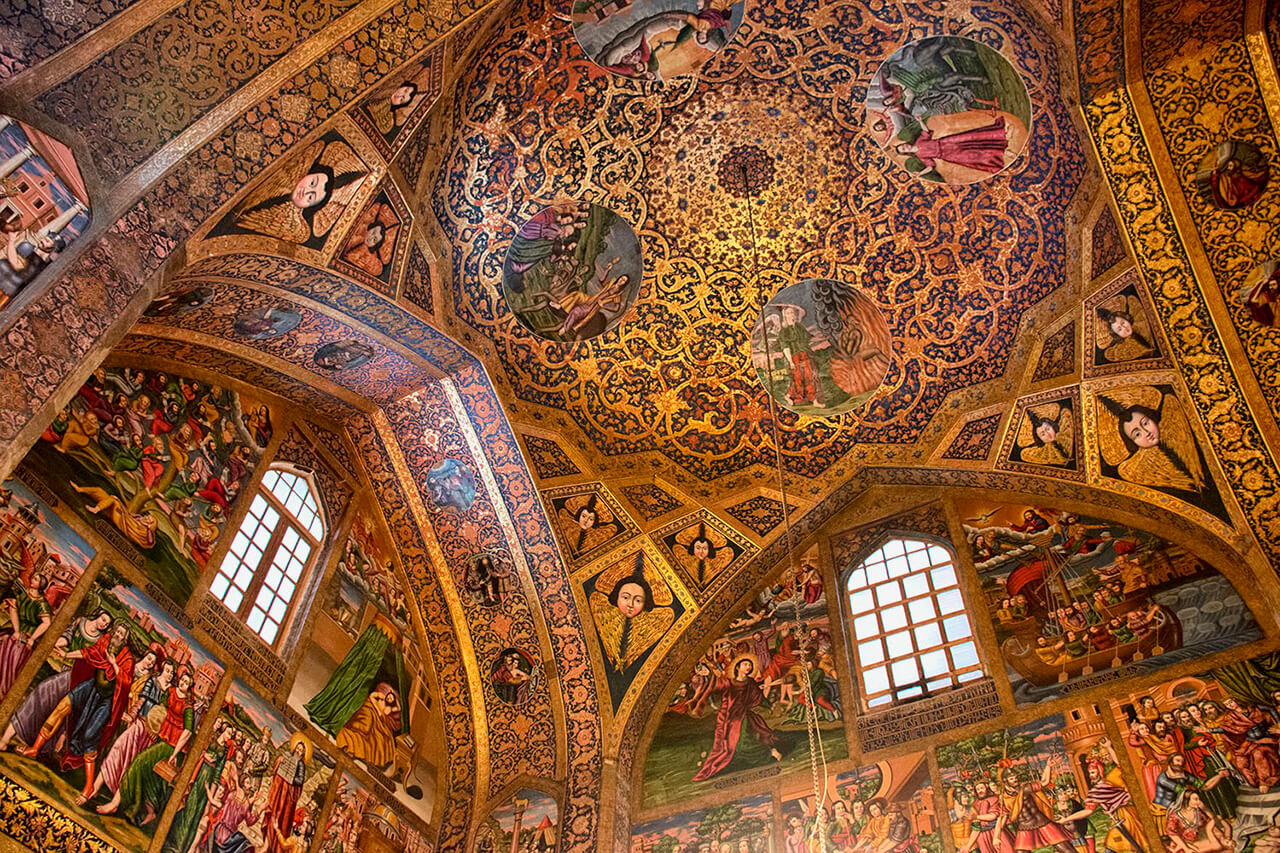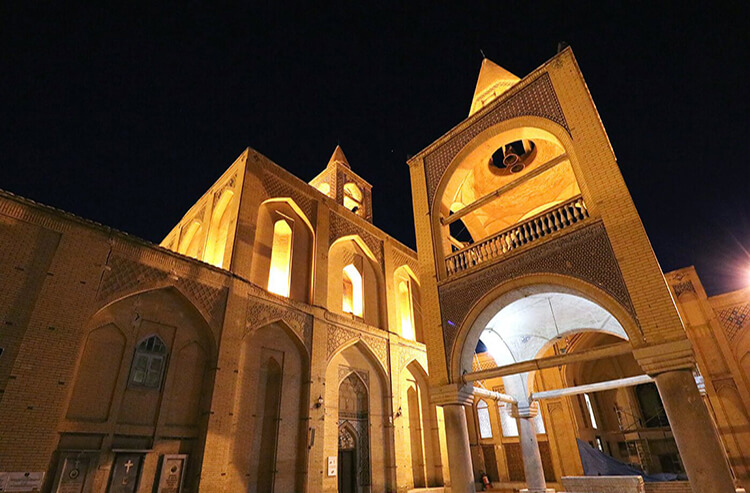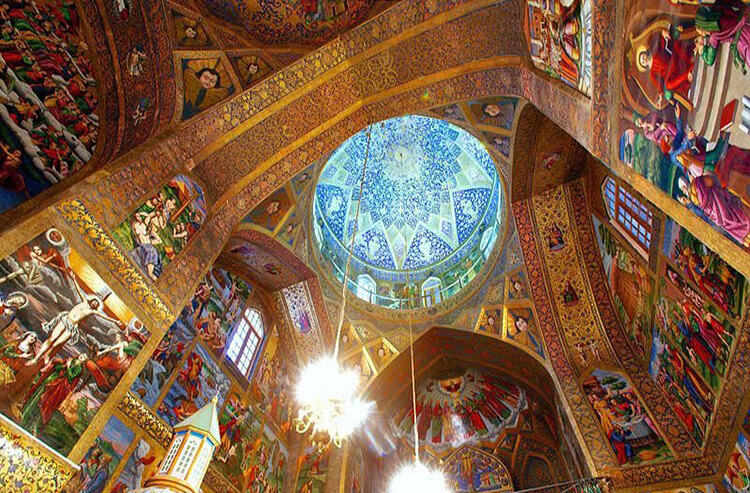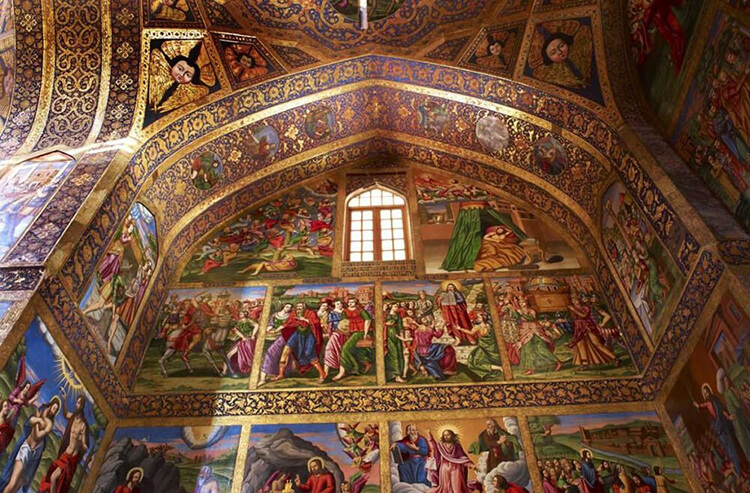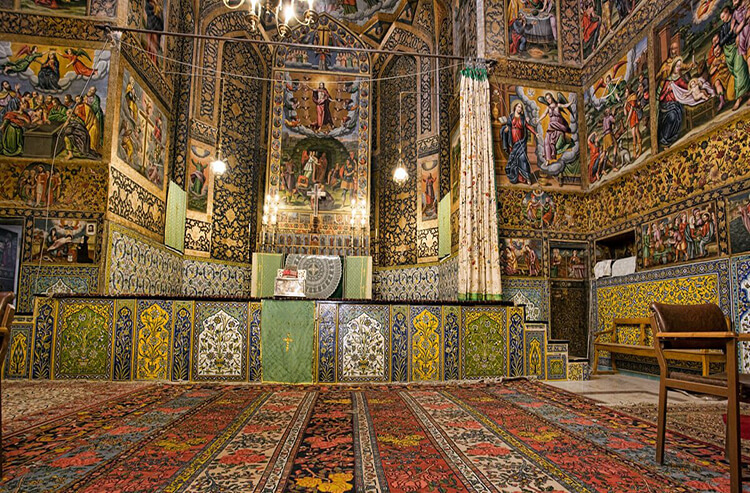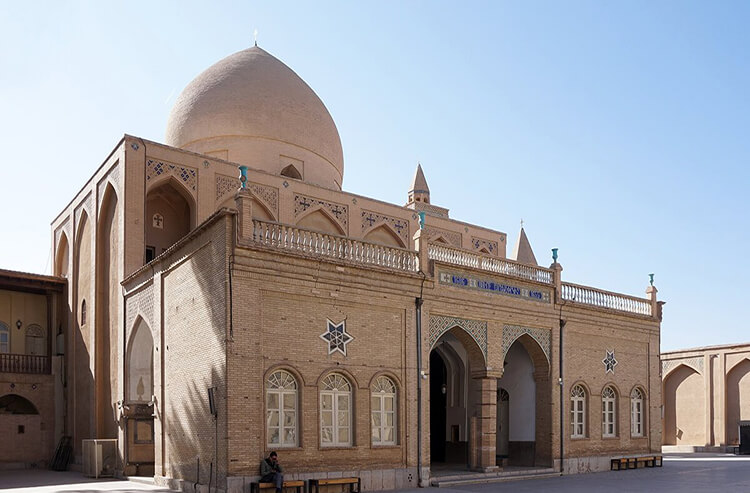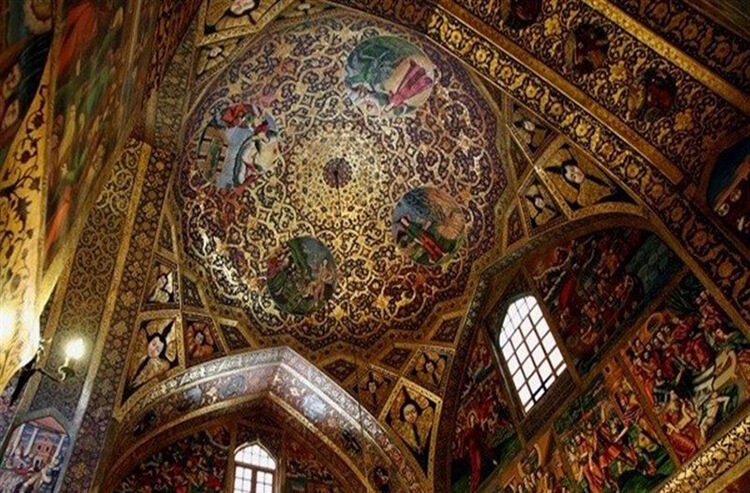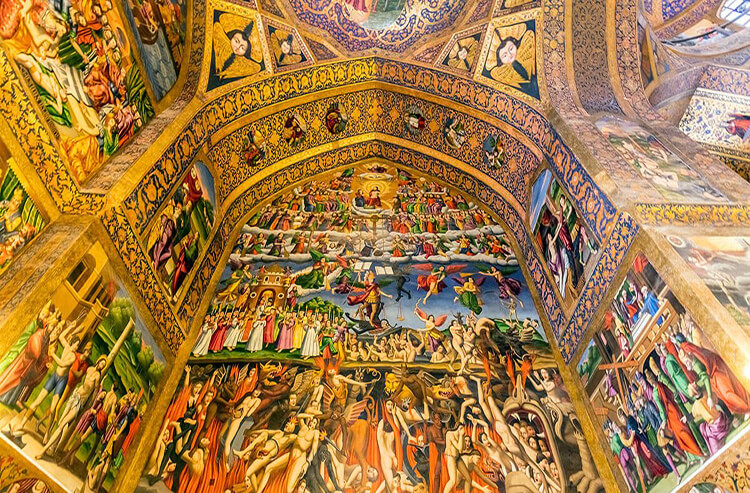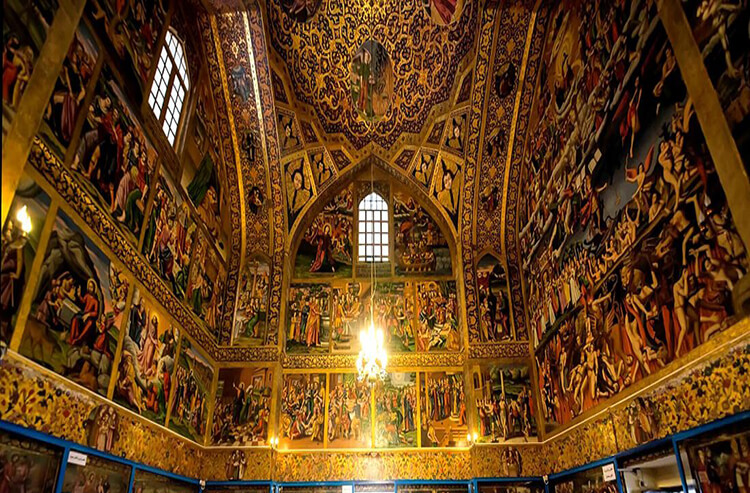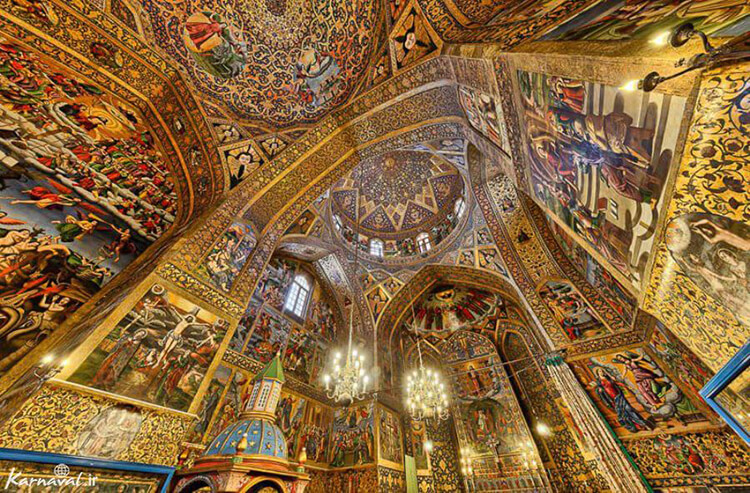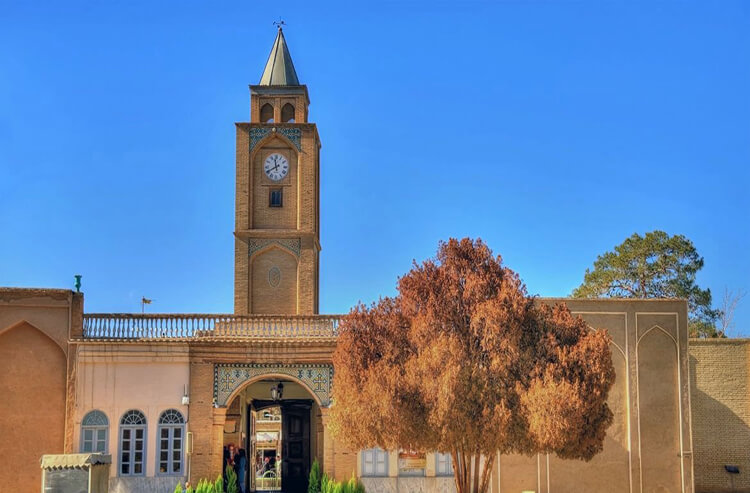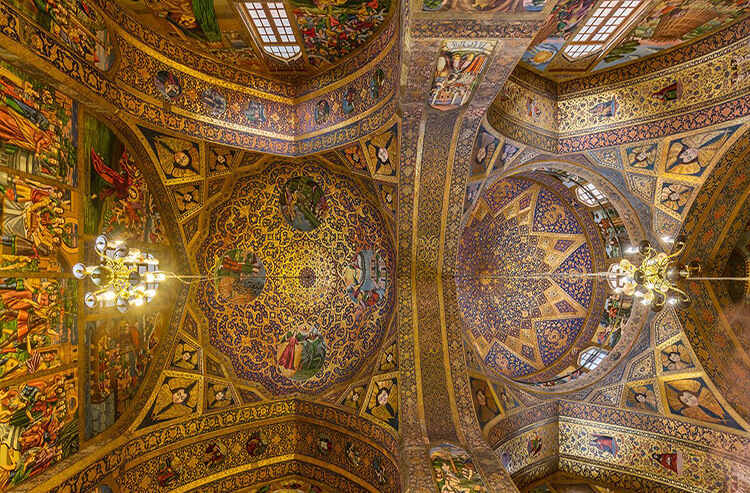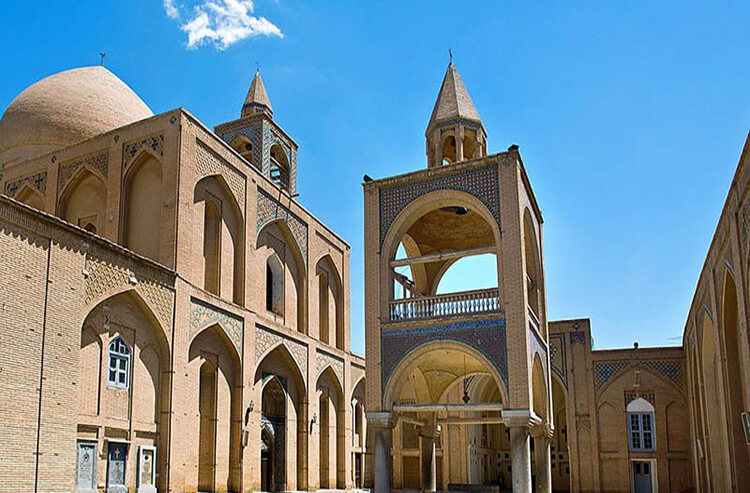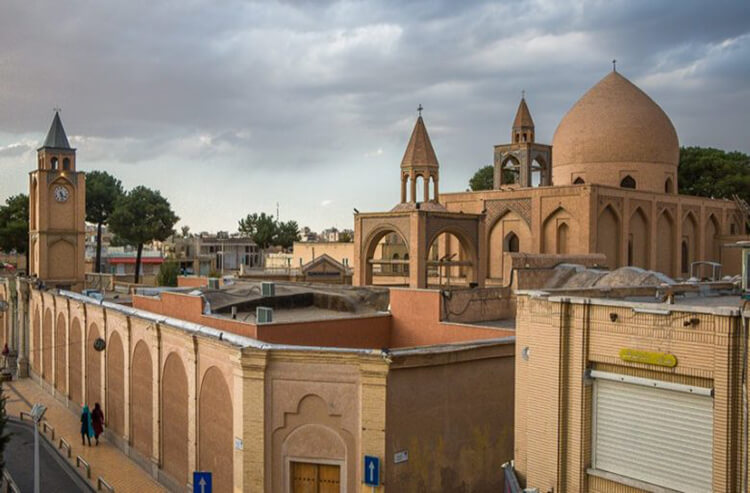Vank Church
The Vank Church is one of the most beautiful and largest churches in the Jolfa vicinity of Esfahan. Its gilded ceiling, interior section of the dome and fine historical paintings are matchless Internally, the walls are adorned with oil paintings that are also gilded similar to that of Iranian art. Religious paintings revealing an Italian touch can be observed here.
Vank Cathedral (Holy Savior Cathedral) was built by Armenians, who fled the Ottoman massacre of the early 1600s and found a new home in the city’s Jolfa quarter on the southern bank of Zayandeh River.
About 150,000 Armenians fled from Julfa in Nakhchivan, now an exclave of the Republic of Azerbaijan, and settled in Isfahan in 1606, where Safavid monarch Shah Abbas I (1571-1629) gave them refuge and named their new home New Jolfa.
One of the first buildings constructed by Armenian immigrants in New Jolfa was Vank Cathedral. The construction of this cathedral began in 1606 and it was completed in 1664. With its domed sanctuary, Vank Cathedral incorporates elements of 17th-century Safavid and Islamic architecture.
The interior of the cathedral is covered in fine oil paintings inspired by the works of Italian artists, gilded carvings, rich tilework and floral motifs in the style of Persian miniature paintings. The Cathedral also includes stones from the demolished churches of Julfa in Nakhchivan.
One of the most outstanding features of this church is its Heaven and Hell mural. The blue and gold painted central dome depicts the Biblical story of creation and man's expulsion from Eden. The exterior of the cathedral, unlike its interior, is made of brick and lacks any decorations.
The cathedral complex includes a bell tower erected in 1702, a printing press established by Archbishop Khachatour Kesaratsi in 1636, a library containing 25,000 volumes established in 1884 and a museum opened in 1905, which includes a series of paintings by European artists donated to the museum, hand written manuscripts, edicts by Safavid and other Iranian monarchs about the Armenians of Iran, tapestries, maps, photographs, Safavid costumes and items of ethnological significance, which display the different aspects of Armenian life.
The bell tower was built in the courtyard during the reign of Sultan Husayn (1668-1726) and 38 years after the Cathedral. The tower, which was funded by an Armenian merchant, is located directly across from the entrance of the church. The graves of an Armenian solider and a religious leader are located under this tower.
The courtyard of the cathedral also houses a memorial slab erected in memory of the 1.5 million Armenians massacred in 1915. A number of famous Armenians including a few archbishops as well as European emissaries who passed away in Isfahan have been laid to rest in the cathedral’s courtyard.
